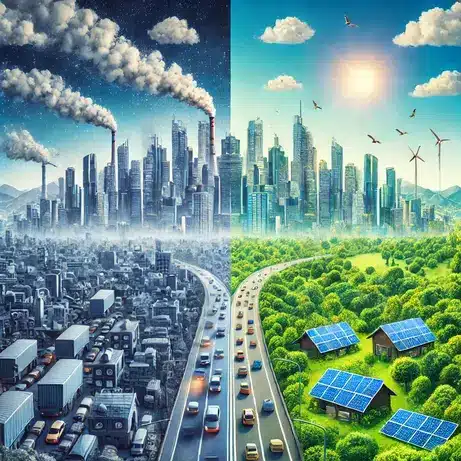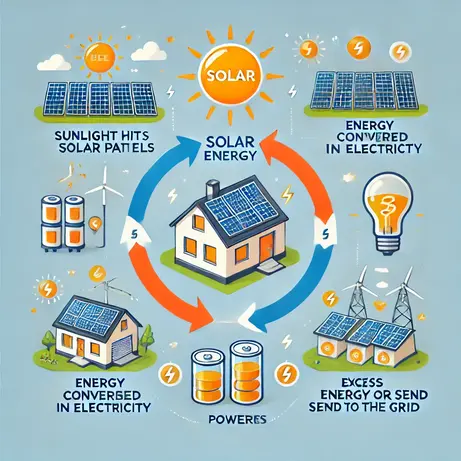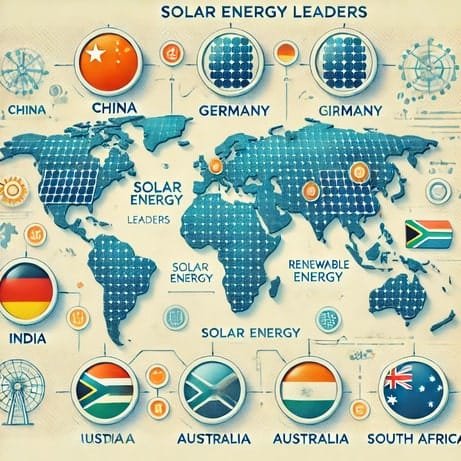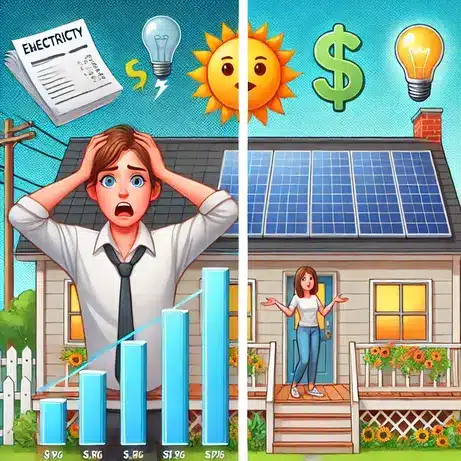The Solar Energy World represents a global shift toward sustainable, solar-powered solutions. Driven by technological advancements, environmental benefits, and economic opportunities, solar power is becoming a key pillar of the future energy landscape.
Why Solar Energy World Matters
The transition to solar energy is fueled by several key benefits:
Technological Advancements
Innovations in solar panels, battery storage, and smart grids are making solar power more efficient, cost-effective, and widely accessible.
Environmental Impact
Solar energy significantly reduces carbon emissions, helping combat climate change and protect natural ecosystems.

Economic Growth
The solar industry is a major driver of job creation, local economic growth, and global investment in clean energy.
📊 According to the International Energy Agency (IEA), global solar capacity grew by approximately 29% in 2023, surpassing previous estimates.
International Energy Agency (IEA) Solar Report
How Solar Energy Works
The process of solar power generation is both simple and revolutionary:

- Solar Panels – Absorb sunlight and convert it into electricity using photovoltaic (PV) cells.
- Inverters – Convert direct current (DC) into alternating current (AC) to power homes and businesses.
- Battery Storage – Stores excess energy for use during nighttime or cloudy days, ensuring a stable power supply.
- Grid Integration – Enables surplus energy to be fed into the grid, reducing dependence on fossil fuels.
- National Renewable Energy Laboratory (NREL) Explanation of Photovoltaic (PV) Cells
🌞 Did You Know? The World Economic Forum predicts that by 2050, solar energy could supply 50% of global electricity needs.
Why the World is Switching to Solar Energy
✅ Lower Energy Costs – Solar power reduces electricity bills and stabilizes energy prices.
✅ Environmental Sustainability – 100% renewable, solar energy prevents over 3,000 pounds of CO₂ emissions per home annually (NRDC).
✅ Energy Independence – Countries investing in solar reduce reliance on imported fossil fuels, strengthening energy security.
✅ Job Creation & Economic Benefits – Over 250,000 people work in the U.S. solar industry alone (SEIA).
Solar Energy Industries Association (SEIA) Report
Global Leaders in the Solar Energy World
Leading Nations in Solar Energy
🌍 China – The world’s top producer of solar panels and a leader in large-scale solar adoption.
🇩🇪 Germany – A pioneer in residential solar incentives and energy efficiency policies.
🇺🇸 United States – Rapidly expanding solar infrastructure and large-scale investments.
Emerging Solar Leaders

🇮🇳 India – Large-scale solar projects, rural electrification programs, and initiatives like Solar Mamas are accelerating solar adoption.
🇦🇺 Australia – Leading in per capita solar capacity, thanks to abundant sunlight and supportive policies.
🌍 African Nations – Countries like South Africa are experiencing a surge in decentralized solar energy solutions, addressing energy access gaps.
United Nations Sustainable Energy for All Initiative
Challenges in the Solar Energy World & Solutions
🔹 High Initial Costs – Government incentives and tax credits, such as the U.S. federal tax credit covering 30% of installation costs, make solar more affordable. U.S. Federal Solar Tax Credit (Energy.gov)

🔹 Intermittency Issues – Advanced battery storage and hybrid solar-wind systems enhance reliability.
🔹 Infrastructure & Policy Barriers – Global investments and international agreements are accelerating clean energy transitions.
How You Can Be Part of the Solar Energy World
🏡 Install Solar Panels – Reduce energy costs and lower your carbon footprint.
📢 Advocate for Clean Energy – Support policies that promote solar power adoption. United Nations Climate Action Resources
🔋 Use Solar-Powered Products – Choose solar-powered gadgets like chargers, lights, and water heaters.
📚 Educate & Spread Awareness – Share the benefits of solar energy with your community.
💡 Pro Tip: Check for available solar incentives in your country to save on installation costs!
The Future of the Solar Energy World
With continued advancements in solar panel efficiency, energy storage, and smart grids, solar energy is on track to become the most affordable electricity source worldwide by 2030.
Join the Solar Revolution!
Solar energy is not just an individual choice—it’s a global movement. By adopting solar solutions, advocating for supportive policies, and spreading awareness, we can shape a cleaner, brighter future.
🌞 How will you contribute to the solar energy revolution? Let us know in the comments or subscribe for the latest updates!
Frequently Asked Questions (FAQs)
❓ What is solar energy?
Solar energy is the power generated from sunlight using technologies like solar panels. It’s clean, renewable, and reduces reliance on fossil fuels.
❓ How do solar panels work?
Solar panels absorb sunlight through photovoltaic (PV) cells, converting it into electricity. An inverter then makes it usable for homes and businesses.
❓ How much do solar panels cost?
Costs vary by system size and location, but the average residential installation ranges from $10,000 to $30,000 before incentives (EnergySage).
❓ Do solar panels work on cloudy days?
Yes! Solar panels still generate electricity, though at a lower efficiency than in direct sunlight.
❓ How long do solar panels last?
Most solar panels last 25-30 years with minimal maintenance, and many come with long-term warranties.
❓ Can I go off-grid with solar energy?
Yes, but you’ll need battery storage to store excess energy for use during nighttime or cloudy conditions.
❓ Are there government incentives for solar energy?
Yes! Many governments offer tax credits, rebates, and grants to make solar energy more accessible. For instance, the U.S. federal solar tax credit covers 30% of installation costs (Energy.gov).
Final Thoughts
The Solar Energy World is more than a concept—it’s a movement shaping the future of global energy. With increasing affordability, technological advancements, and strong environmental benefits, now is the best time to embrace solar power.

Ready to make the switch? Research your options, explore incentives, and join the growing community of solar adopters. The future is solar, sustainable, and bright! ☀️

